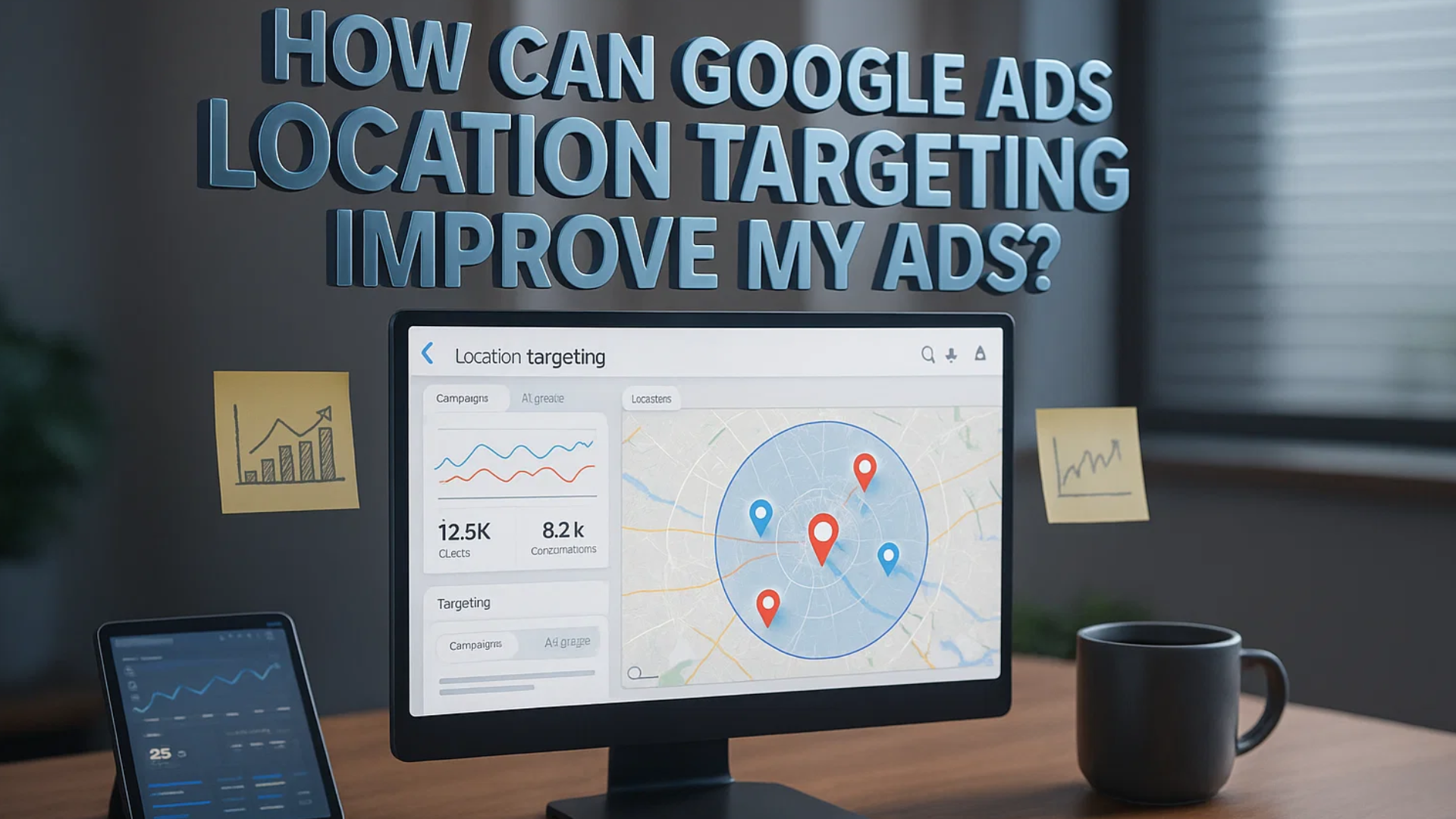How Can Google Ads Location Targeting Improve My Ads?

Are your ads reaching the right people, in the right place, at the right time?
If you're running paid campaigns but not seeing the results you expected, the issue might not be your ad copy or budget but your targeting. Specifically, location targeting can make or break the effectiveness of your Google Ads.
In this blog, we'll break down what Google Ads location targeting is, how it works, and how you can use it to get better results without wasting your ad spend.
What Is Google Ads Location Targeting?
Google Ads location targeting lets advertisers show ads to users in specific geographic locations. These can include countries, regions, cities, zip codes, or even a radius around a certain point on the map.
This feature is especially useful for:
-
Local businesses that serve a specific area
-
National campaigns targeting specific markets
-
E-commerce brands testing performance in different regions
-
Service providers catering to regional demand
Why It Matters:
You're not just saving money, you're increasing your chances of conversions. By narrowing your audience to the right locations, you speak directly to users who are more likely to engage.
How to Set Up Location Targeting in Google Ads
Setting up location targeting is simple if you follow these steps:
-
Log into Google Ads.
-
Choose the campaign you want to target.
-
Go to Settings > Locations.
-
Select the areas you want to target:
-
Country
-
Region or State
-
City
-
Postal Code
-
Custom Radius (in miles or kilometers)
-
Use the “Advanced search” to:
-
Add multiple areas at once
-
Exclude specific locations
-
Set radius targeting around a physical address
-
Save your changes.
Pro Tip: Use Google’s location reports to analyze performance by region and refine your targeting over time.
4 Smart Ways to Use Location Targeting to Boost Results
1. Target High-Converting Areas
If you notice certain cities or regions convert more than others, allocate more budget to those locations. Google Ads reports can show you this data under the “Locations” tab.
2. Exclude Low-Performing Locations
Why waste money in areas that don’t convert? Exclude specific regions to avoid wasted impressions and clicks.
3. Use Location-Specific Ad Copy
Tailor your ads to the audience’s region. Example:Instead of “Fast Plumbing Services,” try “Emergency Plumbing in Dallas – Call Now.” Localized copy builds trust and relevance.
4. Layer With Demographics or Devices
You can combine Google Ads location targeting with other settings like age, household income, device type, or even use Google Ads Scripts to automate and optimize these powerful audience segments.
Benefits of Google Ads Location Targeting
-
Reduces wasted ad spend on users unlikely to convert
-
Improves click-through rates (CTR) by showing ads to relevant users
-
Boosts ad conversion rates by focusing on ready-to-buy audiences
-
Enables regional A/B testing to discover your best-performing markets
-
Supports local SEO and foot traffic for physical locations
When used correctly, google ads location targeting helps advertisers maximize ROI by aligning ads with real-world intent and context.
Common Mistakes to Avoid
-
Targeting too broadly: Don’t select an entire country if only 10% of it is relevant to your business.
-
Ignoring excluded locations: Use negative locations to prevent irrelevant clicks.
-
Forgetting about mobile users: A user might be physically located in your target area but searching for another area factors both in your settings.
You can also watch : Revolutionize Ads with PowerAdSpy's Smart Insights
Conclusion: Make Every Click Count
Google Ads location targeting is one of the most powerful features available to advertisers. Whether you’re a small business owner or managing campaigns for clients, strategic geographic targeting can dramatically improve your ad performance.
Start small. Test locations. Exclude non-performers. Use the data to scale what works.
FAQs
1. What is the difference between presence and interest in location targeting?
-
Presence targets users physically in the location.
-
Interest targets users who show interest in a location (e.g., searching for hotels in New York from Los Angeles).
2. Can I exclude areas within a targeted region?
Yes. You can target a country but exclude specific cities or zip codes within that country.
3. How can I track the performance of location-targeted ads?
Use the “Location” and “User Location” reports under the campaign settings to monitor metrics like impressions, clicks, and conversions by area.
- Art
- Causes
- Crafts
- Dance
- Drinks
- Film
- Fitness
- Food
- Spellen
- Gardening
- Health
- Home
- Literature
- Music
- Networking
- Other
- Party
- Religion
- Shopping
- Sports
- Theater
- Wellness



